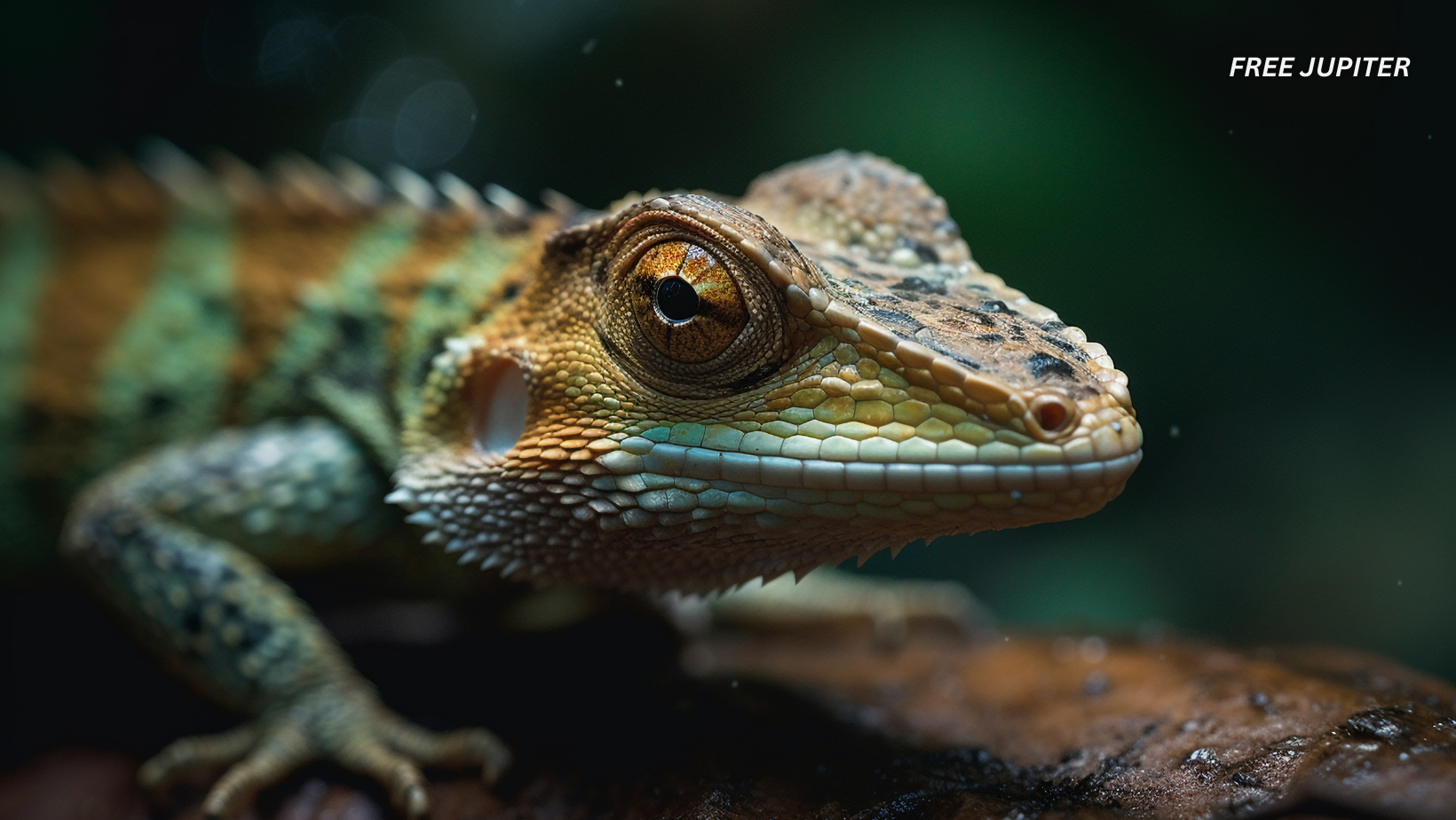Friendly Note: FreeJupiter.com shares general info for curious minds 🌟 Please fact-check all claims—and always check health matters with a professional 💙
For centuries, the natural world has fascinated scientists and laypeople alike, with each discovery peeling back layers of mystery surrounding how animals experience their environment. Among the many senses that creatures use to navigate, communicate, and survive, hearing has long been considered a straightforward process—airborne sound waves captured by ears, translated into signals the brain can interpret. Yet, recent research has revealed that this familiar narrative is far from complete.
Imagine a world where the subtle tremble of the ground beneath your feet carries as much meaning as the chirp of a bird or the rustle of leaves. This is precisely the realm in which a remarkable group of reptiles, the tokay geckos, operate. Known for their distinctive vocalizations echoing through tropical forests, these resilient lizards have now been found to possess an extraordinary sensory ability that goes beyond traditional hearing. Scientists have discovered that the tokay gecko’s inner ear, specifically a structure called the saccule, doubles as a finely tuned vibration detector, capable of sensing ground-borne signals that are imperceptible to human ears.
This revelation challenges two centuries of scientific assumptions about reptilian sensory biology. Historically, researchers believed that reptiles relied primarily on their eyes and noses to interpret their surroundings, while their inner ears served only to maintain balance and spatial orientation. The idea that these creatures could “hear” through vibrations transmitted via the ground was either overlooked or dismissed as unlikely. Now, with modern techniques and a fresh investigative perspective, this ancient sensory pathway has been brought to light, revealing a hidden dimension of perception that has profound implications for our understanding of evolution and animal communication.
Rediscovering the Gecko’s Inner Ear: More Than Just Balance
For centuries, biologists believed that reptiles such as lizards and snakes primarily relied on sight and smell, with their inner ears dedicated solely to maintaining balance and spatial orientation. The inner ear’s saccule, a fluid-filled organ, was traditionally viewed as a vestibular structure, responsible for detecting changes in head position and movement. However, recent research conducted by biologists at the University of Maryland has revealed that the saccule in the tokay gecko serves a dual purpose: it also acts as an exquisitely sensitive receptor for low-frequency vibrations transmitted through the ground.
The tokay gecko, known for its distinctive loud calls, was the focus of this study. Researchers delivered gentle, low-frequency vibrations ranging from 50 to 200 Hz—frequencies considerably below those detected by the gecko’s eardrum—and recorded nerve signals from the saccule. The results were striking: the saccule responded robustly to these vibrations, indicating that it functions as a specialized vibration sensor. This means that geckos operate two parallel auditory channels—one tuned to airborne sounds and another dedicated to sensing substrate-borne vibrations.
Dr. Catherine Carr, Distinguished University Professor of Biology and co-author of the study, explained that this vibration-detecting pathway is an ancient sensory route, long known in fish and amphibians but now confirmed in reptiles. This discovery provides a crucial link in understanding how the auditory system evolved from aquatic ancestors to land-dwelling vertebrates, including humans.
Read more: Research Shows That Crows Hold Their Own Funerals When One Of Them Dies
Mapping the Brain’s Vibration Highway
The research team went beyond nerve recordings and mapped the gecko’s brain to identify where vibration signals are processed. They discovered a specialized relay center called the nucleus vestibularis ovalis, which receives input exclusively from the saccule and transmits it to higher auditory centers in the brain. This structure acts as a dedicated “vibration highway,” distinct from the conventional auditory pathway that processes airborne sounds.
Interestingly, similar brain nuclei were found in other reptiles, including snakes and the ancient New Zealand reptile Sphenodon. This suggests that the vibration-sensing system is widespread among reptiles and may represent a shared evolutionary blueprint. Many snakes and lizards, once thought to be “mute” or “deaf” due to their limited vocalization and poor airborne hearing, might instead communicate and perceive their environment through vibrational signals detected by this pathway.
Postdoctoral researcher Dawei Han, who led much of the experimental work, highlighted that this sensory pathway could fundamentally change how scientists understand animal perception and communication. For example, desert sand-diving snakes, burrowing skinks, and turtle hatchlings inside nests might all rely on sensing vibrations rather than sound to interact with their surroundings.
Evolutionary Insights: A Sensory Legacy from Water to Land
The implications of this discovery extend deep into evolutionary history. Fish use inner-ear organs to detect pressure waves in water, while amphibians live at the interface of aquatic and terrestrial environments. The new findings suggest that early tetrapods—the first vertebrates to venture onto land—retained this vibration-sensing capability alongside the development of eardrum-based hearing.
During the Late Devonian period, early tetrapods had large, robust stapes bones in their middle ears, which likely helped detect low-frequency vibrations transmitted through the ground or water. This contrasts with the more delicate middle ear structures seen in modern mammals and birds, which are specialized for detecting airborne sounds. Over millions of years, some vertebrate lineages reduced or lost this vibration sense, but others, like the tokay gecko, preserved it.
Dr. Carr likened this to the experience of attending a loud rock concert, where the vibrations are so intense that you can feel them throughout your body. She suggested that the human vestibular system, responsible for balance, might also be stimulated by strong sounds, indicating that hearing and balance are closely linked senses even in humans.
Read more: First Time in 30 Years: Scientists Have Discovered A New Class Of Antibiotics
Broader Implications for Science and Technology
The discovery of this sixth sense in geckos opens new avenues for research beyond reptilian biology. If the vestibular system interacts with the cochlea during intense sound exposure, it could provide insights into human conditions such as balance disorders and tinnitus. Understanding how these sensory systems overlap might lead to novel therapeutic approaches.
Moreover, the elegant design of the saccule’s hair cells, which detect vibrations with remarkable sensitivity, could inspire engineers developing advanced sensors. These biological principles might be applied to create more effective earthquake detectors or underwater microphones, devices that rely on sensing subtle vibrations in complex environments.
A New Perspective on Animal Perception
This research invites us to reconsider how animals monitor their surroundings. Geckos clinging to cave walls can detect the faint tremors of approaching footsteps, snakes slithering through leaf litter may sense the movements of prey, and even humans might tap into ancient sensory pathways when immersed in loud, vibration-rich environments.
By uncovering this hidden dimension of hearing, scientists are revealing a complex sensory mosaic that has evolved over hundreds of millions of years. This mosaic spans aquatic fish, amphibians, reptiles, and mammals, illustrating how vertebrates have adapted and repurposed sensory organs to thrive in diverse habitats.
Read more: Beautiful Moment ‘Cat Distribution System’ Brings New Kitty to Emotional Hiker Has People In Tears
Conclusion
Published in Current Biology under the title “Auditory pathway for detection of vibration in the tokay gecko,” this groundbreaking study led by researchers at the University of Maryland challenges traditional views of reptile hearing. It demonstrates that the saccule, an organ once thought to be solely responsible for balance, also serves as a sensitive vibration detector, granting geckos a unique “sixth sense.”
This discovery not only reshapes our understanding of animal sensory systems but also enriches the story of hearing evolution, highlighting the continuity and innovation that have shaped vertebrate life. As we continue to explore these ancient sensory pathways, we gain deeper insight into the remarkable ways animals perceive their world—and perhaps, into our own sensory experiences as well.










